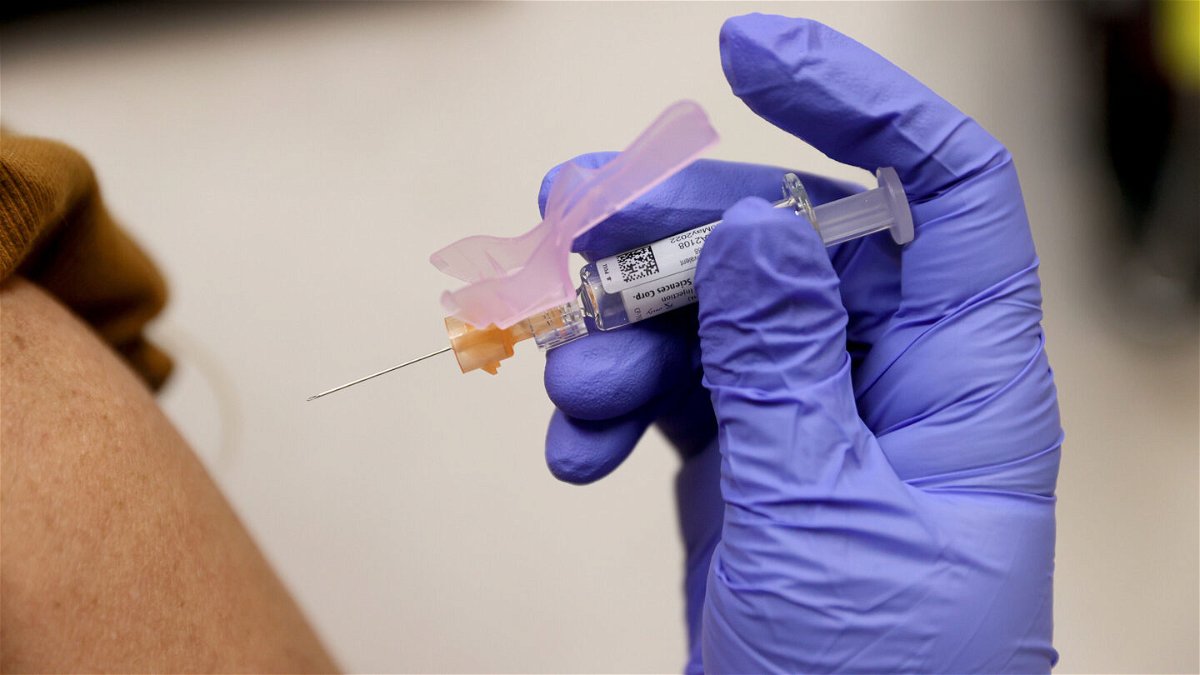Flu vaccine appears to be a very good match to circulating strains, CDC says

This year's flu shot appears to be "a very good match" to the circulating strains
By Brenda Goodman, CNN
This year’s flu shot appears to be “a very good match” to the circulating strains, US Centers for Disease Control and Prevention Director Dr. Rochelle Walensky said at a news briefing Monday. However, she noted flu vaccinations are lagging behind the pace of previous years.
Through the end of October, CDC data shows vaccinations for pregnant women, a group that is more vulnerable to severe illness from influenza, are down about 12% from the same point in 2021.
Vaccination rates for seniors, the age group most likely to be hospitalized with influenza, were down about 3 percentage points from October 2021.
Flu vaccinations for children are down about 5% compared with where they were before the Covid-19 pandemic, Walensky said.
In a typical year, about 60% of American adults get vaccinated against influenza.
Flu hits the US hard
Flu season has gotten off to an early and severe start in the US, with hospitalization rates hitting levels that typically aren’t seen until December or January.
“We, of course, look in real time as to how well we think the influenza match is to what is circulating right now. The good news is that looks like it is a very good match,” Walensky said of the early start to the respiratory virus season.
She noted that the CDC would have more definitive data later in the season but that the data is encouraging.
Walensky said that even when the vaccine doesn’t closely match the circulating flu strains, “We see a 35% decrease in rates of hospitalization … which really just emphasizes, when we do have a good match, how much more effective it will be.”
CDC data shows that nearly 20,000 people in the United States were admitted to the hospital for flu during the week of Thanksgiving, almost double the number of admissions from the week before.
Covid-19 hospitalizations have ticked up as well, rising 27% in the week after Thanksgiving. But Covid-19 is no longer the only virus straining hospitals.
Just 5% of the US population lives in an area considered to have a high Covid-19 community level.
Walensky said Monday that the CDC was “actively looking into” expanding its community levels beyond Covid-19 to include the effects of other viruses, such as the flu.
“In the meantime, what I do want to say is, one need not take wait for CDC action in order to put a mask,” she said.
People who are sick should stay home and away from others, use good hygiene like covering coughs and washing hands frequently, use a high-quality mask and improve the ventilation in indoor spaces, Walensky said.
Treatment is available
If you do get sick, it’s important to get tested, even if you’ve been vaccinated, said Dr. Sandra Fryhofer, board chair of the American Medical Association and an internal medicine physician in Atlanta.
If you have Covid-19 or the flu, there are antiviral medications for both. But flu antivirals don’t work against Covid-19, and vice versa.
“It is going to be a confusing respiratory infections season. Figuring out what’s making people sick is going to be a conundrum,” Fryhofer said.
In response to a question about shortages of key medications during this rough virus season, Walensky said that “CDC is aware of the reports of some of the shortages for both antivirals as well as antibiotics across the country. I know FDA is working…with manufacturers to try and explore what can be done to address this.”
She also urged doctors not to prescribe antibiotics for illnesses caused by viruses.
Dr. William Schaffner, an infectious disease expert at Vanderbilt University Medical Center in Nashville, said he and his colleagues have been astonished by the steep increase in flu cases this season. They have also wondered what could be causing it.
He says it’s likely that after two years without much flu activity in the US, we lost some of our immunity against that virus just as the country has returned to more normal travel and activity patterns.
“Some of it has got to do with our behaviors in the past, having avoided flu and now opening up our lives to activities such as travel, religious services, getting together with families, going out to entertainment venues and doing all those things that take us into groups,” he said.
The flu vaccines are good at preventing severe outcomes, he said, but they don’t do much to stop the virus’ spread.
“It keeps you out of the emergency room, the hospital, the intensive care unit and the cemetery. It’s not very good at interrupting transmission, and it is not very good at preventing milder infection,” he said.
Schaffner says it’s likely that flu hospitalizations are going up because the virus is hitting the elderly, who, on the whole, tend to get less protection from vaccinations.
“The vaccine works least well among the population we most want to protect, namely older people, and that’s because they have immune systems that are much less robust than the immune systems of younger people.”
Schaffner noted that there are high-dose vaccines for seniors, which are preferred for this age group to help increase their protection.
The-CNN-Wire
™ & © 2022 Cable News Network, Inc., a Warner Bros. Discovery Company. All rights reserved.